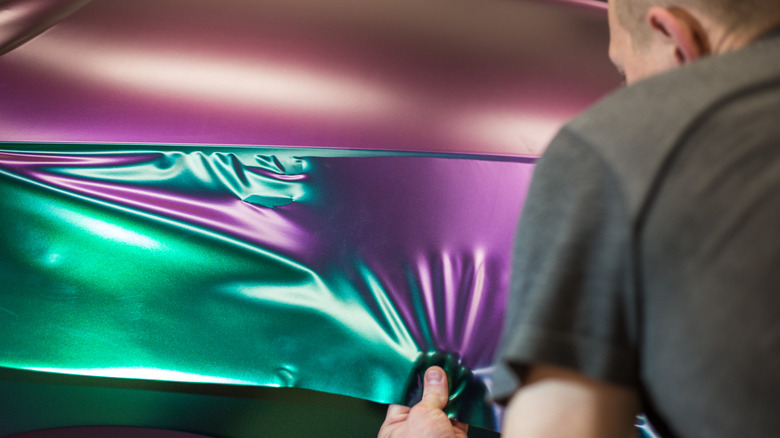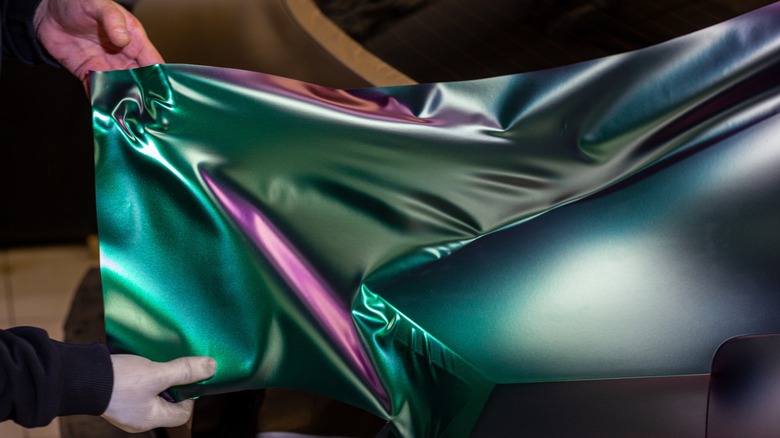Can Car Wraps Be Removed Without Damaging The Paint?
Vinyl automotive wraps are a less expensive way to change the color of your car than getting a full-on paint job, with a quality wrap starting around $2,000. That's a bargain compared to the $5,000 to $10,000 that it would cost for a comparable paint job. Outside of just cost, car wraps can last a long time if properly cared for, are easier to install, and can be done faster. It is even possible to perform a DIY car vinyl wrap yourself. Perhaps the most appealing of all, wraps can be removed at any time if another color switch-up is in order. You can't do that so easily with a paint job.
If you do end up deciding against the wrap you selected and want to remove it, don't worry. Vinyl wraps can be removed without damaging the paint underneath, but it does take a bit of skill and knowledge. Most of the popular brands supplying automotive-grade vinyl wraps design their products with removal in mind. High-quality vinyl doesn't use adhesive to stick to a vehicle. Instead, car wraps work by relying on the properties of the vinyl itself to adhere to a painted surface. In most cases, that means that it comes up without leaving behind damaging residue.
However, there are some instances where extreme conditions, old age, or other forms of damage can cause the removal process to be difficult. Despite being time-consuming, it is still possible with the right tools and a bit of patience.
What is the best way to remove a wrap without damaging paint?
Before starting the removal process, there are a couple of things to know. Because heat softens the vinyl and cold temperatures cause it to harden and constrict, it is much easier to remove vinyl in a warm environment. The tools that you use can also make or break the process, as sharp and abrasive metal tools can damage or scratch paint. Instead, try a plastic razor blade or scraper, which should provide enough leverage to pry up a corner without scraping underneath.
After a corner is pried up, it's time for heat to come into play. It's best to heat the corner with a heat gun, keeping it at least six inches from the surface while peeling the vinyl back at a 45-degree angle, making sure that the vinyl is warm to the touch but not too hot to handle with bare hands. It's also important to keep the heat moving and not sit in the same place for too long, as that can damage the paint. However, you don't want to peel too fast, as that can cause damage to the clear coat as well.
If there is any leftover residue, a small amount of a citrus-based adhesive remover can be applied to a microfiber cloth and used on sticky spots without damaging the paint. It's also a good idea to wash the car thoroughly afterward to clean off any remaining residue.

